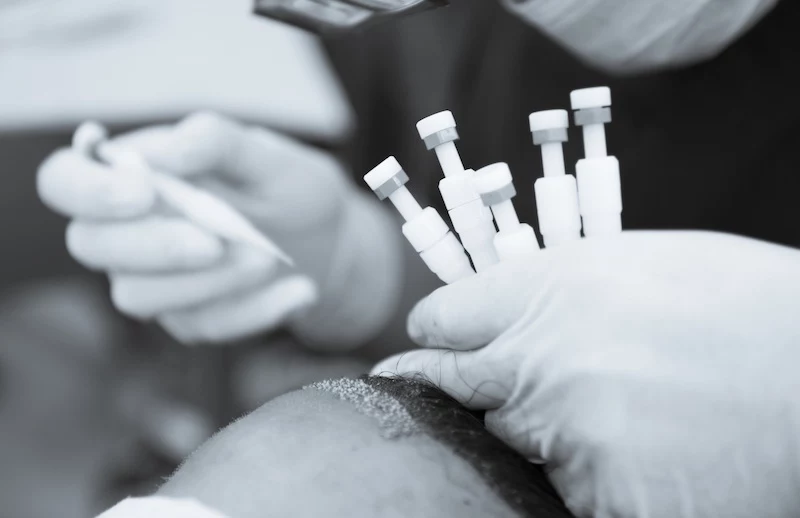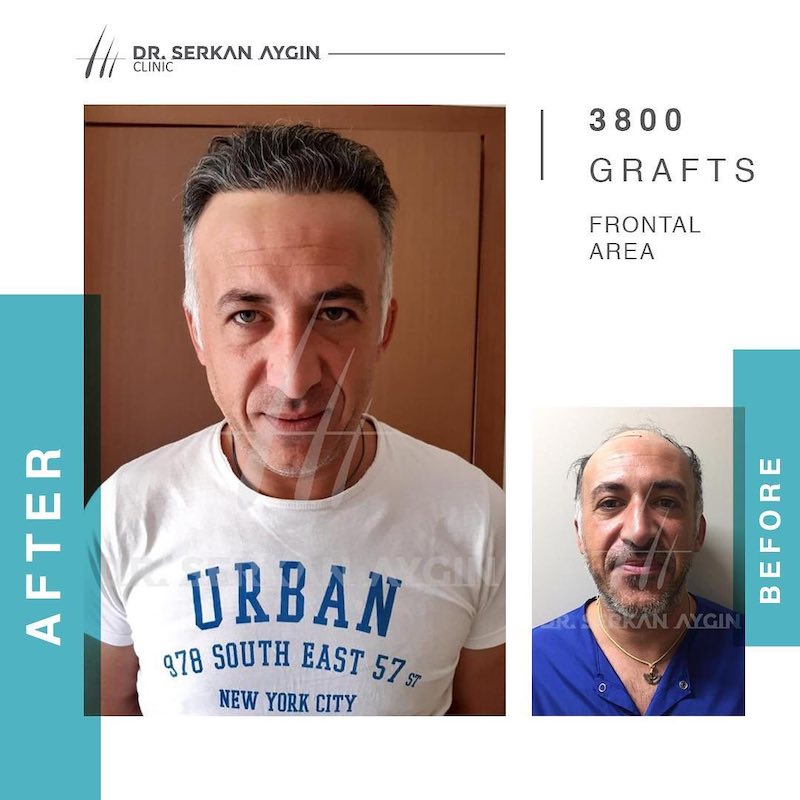The Real Deal on DHI Hair Transplants: An Insider’s Guide
I’ve been in the world of hair restoration for a long, long time. Long enough to see the tools and techniques go from what we’d now call pretty basic to the incredibly refined methods used today. One of the biggest game-changers has been the evolution of Follicular Unit Extraction, or FUE. And that evolution has given us a very specific technique you hear a ton about these days: Direct Hair Implantation, or DHI.
In this article
So, let’s clear something up right away. DHI isn’t some brand-new, revolutionary surgery. It’s better to think of it as a specific method for the final step of an FUE procedure—the part where the hair is placed back into the scalp. It’s a tool, and like any tool, it’s only as good as the hands holding it. My goal here isn’t to sell you anything. It’s to give you the straight-up, honest info I share with my own clients so you can make a smart decision.

First, What Are We Actually Moving?
Before we get into the nitty-gritty of the procedure, we need to talk about what’s being transplanted. It’s not just a single hair. We’re moving a tiny, complete organ called a follicular unit (or a graft). This little powerhouse contains one to four hair shafts, plus all its life support systems: an oil gland, a tiny muscle, nerves, and its own blood supply network.
These units live in the second layer of your skin, the dermis. The key to a successful transplant is getting that graft reconnected to a new blood supply ASAP. Any time a graft is outside the body, it’s literally in a race against time, deprived of oxygen. That’s why the clinic’s technique for handling grafts is everything. A damaged or dried-out graft is a dead graft, no matter how perfectly it’s placed.
We take the hair from what’s called the ‘donor area’—usually the back and sides of your head. Why there? Because the hair in this spot is genetically hard-wired to resist the hormone (DHT) that causes most common pattern baldness. And here’s the magic: when we move that follicle, it keeps its programming. It will grow in its new spot just like it did in its old one, which is why a hair transplant can be a truly permanent solution.

The Main Event: FUE vs. DHI Explained
To really get what makes DHI different, you have to understand the standard FUE process first. It’s a proven and effective method that many top-tier clinics use. Then, we’ll see how DHI changes the game slightly.
The Standard FUE Approach:
This is the classic, reliable workhorse of hair restoration. The surgeon first makes all the tiny incisions in the balding area with a fine blade, often a custom-cut sapphire one. This step is all about artistry—setting the exact angle, direction, and pattern for a natural look. Then, while the extracted grafts rest in a holding solution, a team of technicians uses fine forceps to carefully place each graft into those pre-made sites. It’s methodical and allows for great results.
The DHI Method:
Okay, so how does DHI shake things up? It combines making the site and placing the graft into one single motion. This is done using a specialized tool often called an implanter pen. It’s a pen-shaped device with a tiny, hollow needle at the tip.

Here’s the flow: A technician carefully loads a single hair graft into the hollow needle of the pen. The surgeon then takes the loaded pen and, in one fluid movement, presses the needle into the scalp at the perfect angle and depth. As they do this, they press a plunger on the pen, which gently deposits the graft into the skin as the needle is withdrawn. Lather, rinse, repeat… a few thousand times.
The big theoretical advantage here is that the graft spends less time outside the body and is shielded by the pen during insertion, potentially reducing handling trauma. Honestly, both methods can produce A+ results. The real difference-maker is always the skill and experience of the surgeon.
Before You Even Get to the Clinic
Heads up! Your preparation in the week leading up to the procedure is super important for a smooth process and good results. Most clinics will give you a list, but here are the universal rules:

- Stop blood thinners. About a week before, you’ll need to stop taking things like aspirin, ibuprofen, fish oil, and even high doses of Vitamin E. This reduces bleeding during the procedure. (Always check with your primary doctor first if you’re on prescribed medication!).
- No alcohol or smoking. Cut out alcohol for at least three days prior and smoking/vaping for at least a week. Both can interfere with anesthesia and healing.
- Arrange your ride. You’ll be given a mild sedative and local anesthesia, so you won’t be in any condition to drive yourself home. Plan for a friend, family member, or a taxi service.
- Plan for comfort. Get some button-up or zip-up shirts ready. The last thing you want is to pull a tight t-shirt over your brand-new grafts.
Who’s a Good Fit and What’s This Going to Cost?
DHI is a fantastic technique, but it isn’t the perfect choice for absolutely everyone. A good practitioner guides you to the right method for your hair, not just the most popular one.
An ideal candidate for DHI usually has straighter or slightly wavy hair. The implanter pen’s needle is very narrow, and very curly or Afro-textured hair follicles, which have a C-shape under the skin, can be tricky to load without damage. For curlier hair types, the classic FUE method of pre-making incisions often gives the graft a better chance to thrive.
Also, it’s about your level of hair loss. To give you a real-world idea, someone with receding temples (a classic Norwood 2-3 pattern) is a great case. Around 1,500 to 2,500 grafts can totally reframe the face and look amazing. But for someone with extensive loss (like a Norwood 6), the goal shifts. You’re looking at a multi-session plan to create the illusion of coverage, not restore the thick hair of your youth.
Now, let’s talk money. This is what everyone wants to know, right? In the US or UK, you can expect to pay anywhere from $5 to $12 per graft. Standard FUE might be on the lower end of that scale, while DHI is often on the higher end because the disposable pens add to the cost. So, a 2,000-graft DHI procedure could realistically range from $12,000 to $24,000. It’s a serious investment.
The Deal with ‘Medical Tourism’
You can’t talk about hair transplants without mentioning places like Turkey, where prices are dramatically lower. That price difference is mostly about economics—lower cost of living and government support for medical tourism. It’s NOT an automatic indicator of bad quality. There are truly world-class, accredited surgeons there doing phenomenal work.
However, you have to be careful. The high demand has created a dark side:










